In January 2015 North Dakota experienced one of the worst environmental disasters in its history: A pipeline burst, spilling nearly 3 million gallons of briny, saltwater waste from nearby oil-drilling operations into two creek beds. The wastewater, which flowed all the way to the Missouri River, contained chloride concentrations high enough to kill any wildlife that encountered it.
It wasn’t the first such disaster in the state. In 2006 a spill of close to 1 million gallons of fracking wastewater into the Yellowstone River resulted in a mass die-off of fish and plants. Cleanup of that spill was still ongoing at the time of the 2015 spill, nearly a decade later.
Spills like these highlight the dangers that come with unconventional fossil-fuel extraction techniques that go after hard-to-reach pockets of oil and gas using practices like horizontal drilling and high-volume hydraulic fracturing (otherwise known as fracking).
But events like these massive spills are just the tip of the iceberg. Other risks to wildlife can be more contained, subtle or hidden.
And while many of the after-effects of fracking have grabbed headlines for years — such as contaminated drinking water, earthquakes and even flammable faucets — the consequences for wildlife have so far been left out of the national conversation.
But those consequences are very real for a vast suite of animals including mussels, birds, fish, caribou and even fleas, and they’re as varied as the species themselves. In some places wildlife pays the price when habitat is destroyed. Elsewhere the damage occurs when water is sucked away or polluted. Still other species can’t take the traffic, noise and dust that accompany extraction operations.
All this damage makes sense when you think about fracking’s outsized footprint.
It starts with the land cleared for the well pad, followed by sucking large volumes of water (between 1.5 and 16 million gallons per well) out of rivers, streams or groundwater.
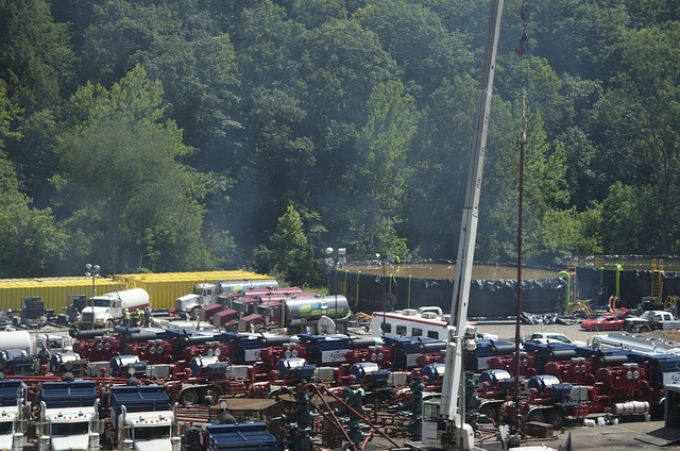
Then there’s the sand that’s mined for use during the fracturing of underground rock to release natural gas or oil. There are also new pipelines, compressor stations and other related infrastructure that need to be constructed. And there’s the truck traffic that surges during operations, or the disposal of fracking wastewater, either in streams or underground.
The cumulative footprint of a single new well can be as large as 30 acres. In places where hundreds or thousands of wells spring up across a landscape, it’s easy to imagine the toll on wildlife — and even cases with ecosystem-wide implications.
“Studies show that there are multiple pathways to wildlife being harmed,” says ecologist Sandra Steingraber, a distinguished scholar in residence at Ithaca College who has worked for a decade compiling research on the health effects of fracking. “Biodiversity is a determinant of public health — without these wild animals doing ecosystem services for us, we can’t survive.”
Losing Ground
The most obvious threats fracking poses to wildlife comes in the form of habitat loss.
As rural areas become industrialized with each new well pad and its associated infrastructure, vital habitat for wildlife is altered or destroyed.
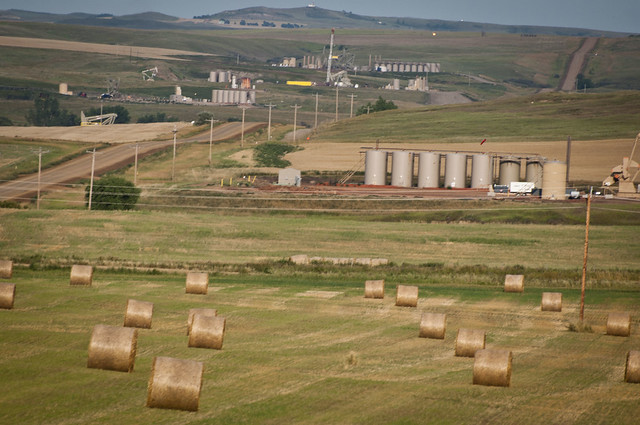
And it’s not just the area containing the well. The land or water just outside of the operation, known as “edge habitat,” also degrades with an increase in the spread of invasive plant species, among other concerns.
And large-scale development, such as miles-long pipelines, can change the way species move and hunt, often resulting in an increase in predation. The oil and gas development in Alberta, Canada, for example, created “wolf highways” that gave the predators easy access to an endangered herd of woodland caribou.
Roads, another kind of fragmentation, can be particularly dangerous for wildlife. A single fracked well can be responsible for 3,300 one-way truck trips during its operational lifespan, and each journey can injure or kill wildlife large and small. After all, it’s hard to get out of the way of a tanker truck carrying 80,000 pounds of sand.
And then there’s the big picture. Drilling within large, “core” forest areas previously located far from human development can be permanently detrimental for species such as migratory songbirds.
In one study, published in Biological Conservation in 2016, researchers examined the effects of unconventional gas drilling on forest habits and populations of birds in an area of West Virginia overlaying the Marcellus and Utica shales. The area has been at the center of the shale gas boom, with the number of unconventional wells in central Appalachia jumping from 111 in 2005 to 14,022 by the end of 2015. The study found that shale-gas development there during that period resulted in a 12.4 percent loss of core forest and increased edge habitat by more than 50 percent — and that, in turn, changed the communities of birds found in the forest.
The areas near well pads experienced an overall decline in “forest specialists” — birds that prefer interior forest habitat, among them the hooded warbler and Kentucky warbler, which are of high conservation priority, as well as cerulean warblers. These sky-blue endangered migratory songbirds have been dropping in numbers for decades, but researchers noted that the decline was 15 percent higher in their study area than in the greater Appalachian Mountains region during the same period.
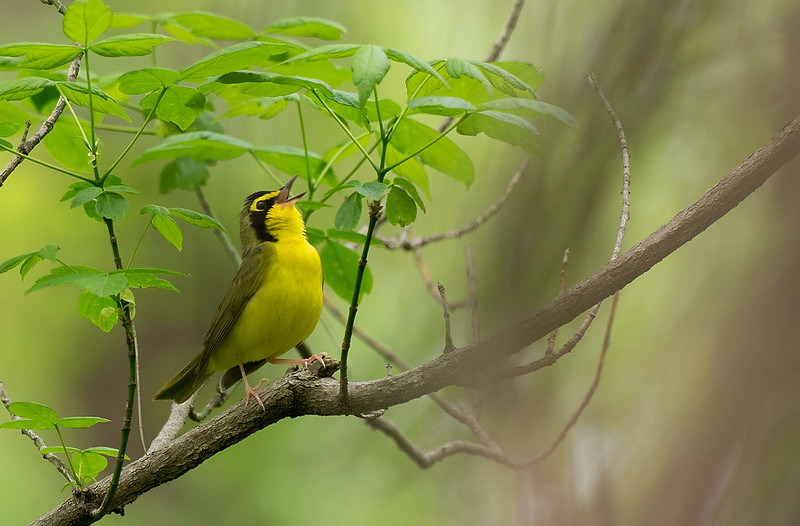
“For migratory songbirds, large blocks of forest are very important,” explains Margaret C. Brittingham, a professor of wildlife resources at Penn State University who has studied the effects of fracking on wildlife. The birds do best in interior forest habitat with mature trees. They also serve as an important part of the forest ecosystem, helping to prevent or suppress insect outbreaks that can damage trees. “They’re co-evolved with the forest, feeding on insects and keeping those forests healthy,” she says.
Not all species declined in numbers from fracking development. The study found an increase in the kinds of birds that do well among humans and in developed areas — “habitat generalists” such as the American robin, blue jay and brown-headed cowbird, the latter of which are notorious brood parasites that leave their eggs in nests of other birds.
“I think the most alarming thing about all of this is what bird declines may indicate about the declining health of overall ecosystems,” says Laura Farwell, a postdoctoral research associate in the department of Forest and Wildlife Ecology at the University of Wisconsin-Madison and lead author of the Biological Conservation study. “I know it’s a cliché, but forest interior birds truly are ‘canaries in the coal mine’ for Appalachian forests experiencing rapid loss and fragmentation.”
Farwell adds that many other kinds of development contribute to habitat loss that result in biodiversity declines. Fracking is one more added pressure, but the consequences are quite significant.
“It just happens to be disproportionately affecting some of the largest remaining areas of undisturbed, mature forest left in the eastern U.S., and these forests are incredibly valuable for biodiversity,” she says.
Out West the industry is carving up a different kind of habitat, and that has other species on the ropes. Greater sage grouse, for example, depend on large home ranges composed of intact areas of sagebrush. Cattle ranching and development of all kinds have pushed the grouse near extinction, and continued unbridled oil and gas extraction in its remaining habitat could tip it over the edge.
A 2014 study co-authored by Brittingham found that oil and gas infrastructure and related disturbances to sage grouse can cause the birds’ populations to decline — or even disappear in areas with particularly high levels of oil and gas development.
Sage grouse have also been shown to exhibit high levels of stress from noise.
Noise poses additional risks for birds that depend on their hearing. A study published in Biological Conservation in 2016 found that noise from compressor stations, which run 24 hours a day, reduced the ability of northern saw-whet owls to catch prey. The researchers found that for owls and other “acoustically specialized predators,” noise can cause significant negative impacts on behavior, like a decreased ability to hunt, and that can ripple through the ecosystem.
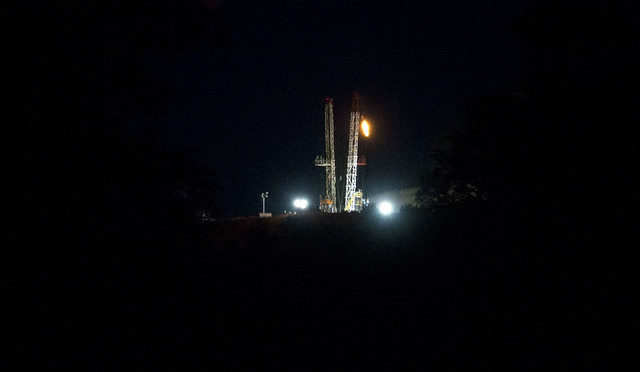
Light, too, can be a problem. Oil and gas operations in some places have turned once-dark rural areas into blazing mini-cities in quick time. A 2012 photo revealed that gas burned off from wells in North Dakota’s Bakken Shale was so bright it was visible from space — something not seen just six years before. Light pollution like this can be deadly for migratory birds and disrupt other nocturnal animals.
It’s in the Water
The fracking process uses a lot of water and much of that contaminated H2O returns to the surface, bringing with it heavy metals, radioactivity, toxic chemicals (many of which are industry trade secrets) and high levels of salinity. Disposing of all that wastewater has created headaches for the industry and in some cases it’s now proving to endanger wildlife.
Spills or intentional dumping of wastewater or fracking fluid released 180 million gallons into the environment between 2009 and 2014, according to an investigation by the Associated Press. Unsafe levels of some contaminants have been found to persist for years, as was the case in North Dakota.
Not all spills and intentional releases of wastewater in streams create noticeable impacts like fish going belly up — some are more subtle and harder to see — but they may still take a real toll on aquatic life.
A 2019 study in Ecotoxicology and Environmental Safety looked at what happens when crustaceans called water fleas encounter a fracking-fluid spill. Researchers found that even when the fluids were diluted in a stream, their high salinity could decrease insect mobility and survival. The Canadian province of Alberta, the researchers noted, has recorded 100 such large-volume spills.
Lowly water fleas — in this case a species called Daphnia magna — may not seem like animals we should worry about, but like so many small creatures, they occupy an important niche.
“They are the basis of the freshwater ecosystem,” Steingraber explains. “When the water fleas are gone, the guys that feed on them are gone — frogs and fish die, and those that feed on them die and suddenly you have a biodiversity problem because you’ve knocked out a species at the bottom of the aquatic food chain.”
Some of this may already be playing out in other locations. A 2016 study published in Ecotoxicology that found a decrease in biodiversity of macroinvertebrates in Pennsylvania streams where fracking was occurring in the watershed — and, even worse, “no fish or no fish diversity at streams with documented frackwater fluid spills.” In some cases streams that once contained large numbers of brook trout had none left. The researchers concluded that “fracking has the potential to alter aquatic biodiversity…at the base of food webs.”
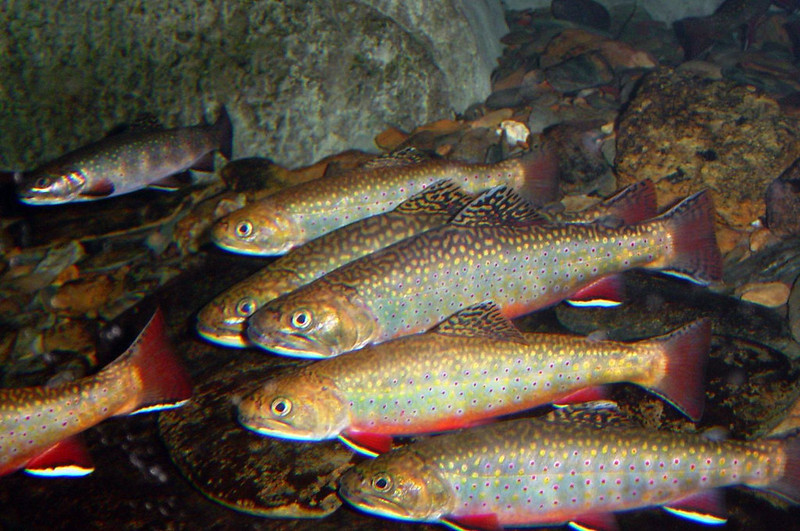
Elsewhere, it’s possible that contamination of surface waters has already taken a toll on the Louisiana waterthrush (Parkesia motacilla), a bird that breeds along forest headwater streams and feeds on macroinvertebrates. A 2015 study published in Ecosphere found that shale gas development had negative effects on the nest survival and productivity of waterthrushes and the researchers posited that “indirect effects on stream and terrestrial food webs from possible contamination” by the oil and gas industry could be to blame.
The research, which looked at sites in both the Marcellus and Fayetteville shale regions, showed that the birds’ feathers contained elevated levels of barium and strontium — two heavy metals associated with the drilling process — in areas where fracking had taken place. Much like when lead shows up in a human’s hair, the presence of these metals in the birds’ feathers is a sign that contaminants in the environment are making their way into animals’ bodies.
And that raises even bigger concerns.
As the researchers concluded in their paper: “Our finding of significantly higher levels of barium and strontium also suggests the possibility of surface water contamination by any of the hundreds of chemicals that may be used in hydraulic fracturing, including friction reducers, acids, biocides, corrosion and scale inhibitors, pH adjusting agents and surfactants.”
A similar line of inquiry is being pursued by other researchers. Nathaniel Warner, a professor of civil and environmental engineering at Penn State University, has been using the shells of freshwater mussels to read the changes in water chemistry in Pennsylvania’s Allegheny River. Mussels record environmental conditions in their shells each year — much like tree rings.
Warner and his colleagues have also found elevated levels of strontium in the shells of mussels living downstream from a site where treated fracking wastewater was discharged. Strontium, which is found in high concentrations in oil and gas wastewaters, is a naturally occurring metal with some medical benefits but which in large exposures can cause bone loss and other side effects.
But Warner says they are still trying to determine what the impacts are for mussels and aquatic ecosystems — not to mention the people who get their dinner from the river.
“We haven’t really gotten to the point where we can say this is harmful or not,” he says. “We really focused on the hard shell itself. But now we’re looking more at what happens in that soft tissue because muskrats and fish don’t really eat the shell that much, but they eat the soft tissue. And so what levels of contaminants or pollution ended up in that soft tissue compared to the shell?” He says that’s probably more important for determining what this really means for wildlife or even human health.
University of Wisconsin’s Farwell says that she’d also like to see more research on what the accumulation of contaminants in the bodies of waterthrushes means for other wildlife and for humans. “Air pollution is another important issue to consider,” she adds. “I’m not aware of any current studies that have looked directly at impacts of fracking air pollution on wildlife.”
You can add these topics to the long list researchers are hoping to explore, but there will still be a lot about how fracking and other extraction technologies are affecting wildlife that we don’t know. And with natural gas still projected to be one of the fastest growing energy sources in the United States, the time to understand its impacts on wildlife grows short.
“The industry boomed at such a rapid pace, researchers and policymakers could barely keep up,” she says. “And in most cases, we don’t have baseline data at impacted sites to compare with current numbers. Unfortunately, most of us studying fracking impacts have been playing a game of catch-up since the beginning.”
![]()



4 thoughts on “We’re Just Starting to Learn How Fracking Harms Wildlife”
Comments are closed.